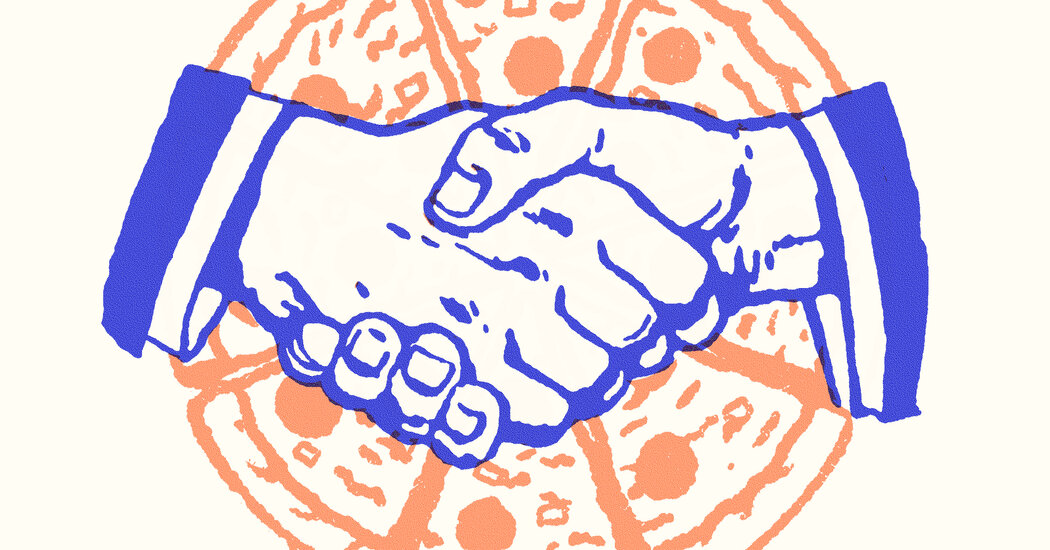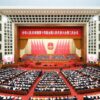Clam pizza is considered a treat in New Haven, Conn., where Yale students line up for it. So when Barry Nalebuff wanted to introduce his Yale School of Management students to a key concept in negotiating theory, he explained it in terms of dividing a 12-slice clam pizza between two hungry people. Read closely and you’ll learn a technique that you can use whether you’re a parent of squabbling kids or a titan of finance (or both!).
A pizzeria tells Alice and Bob that they can have an entire pizza free if they can agree on how to split it, but if they can’t agree they’ll get only half a pizza — six slices. The twist is that if they can’t agree, Alice will be given four of the slices and Bob just two. The question: How should they split the 12 pieces?
Untrained students tend to say either that Alice should get eight of the 12 (if they believe that she has more negotiating power because of her better fallback position) or six of the 12 (if they believe in fairness). Neither answer is correct, Nalebuff explains in a fascinating book that’s being released on March 8, “Split the Pie: A Radical New Way to Negotiate.”
Nalebuff says that the right way to structure this negotiation — and really, any negotiation — is to focus on the extra value that’s created by reaching an agreement, and divide that extra value equally. The extra value in this case is six slices, so giving three to each in addition to the slices they would have gotten anyway leaves Alice with seven and Bob with five.
It’s so simple that you’re tempted to think Yalies should be tackling harder problems. Nalebuff cheerfully admitted to me this week, “There’s no journal that would ever publish this work.”
In reality, though, most people, including the pros, get this wrong in negotiations. They try to divide the wrong amount instead of zeroing in on the relevant bit, which is the value that would not exist if a deal were not done.
Or people assume, incorrectly, that the person who has the better fallback position (like Alice with the clam pizza) should be able to extract a bigger share of the extra value. For instance, Roger Fisher and William Ury make this assumption in their book “Getting to Yes: Negotiating Agreement Without Giving In.” They write, “The relative negotiating power of two parties depends primarily upon how attractive to each is the option of not reaching agreement.”
That is a common misunderstanding, Nalebuff said (while stressing that he is a disciple of Fisher and Ury’s call to focus on interests, not positions). When it takes two to tango, each tango dancer is indispensable and therefore should get an equal share of the value of what they create together, he told me. “It’s one of those things that I think is hiding in plain sight,” he said. “Once you say it, it’s pretty obvious. Instead, people focus on verbal tricks to get more of the pie.”
Nalebuff used his own technique for the first time in the real world in 2008 when he negotiated with Coca-Cola on its two-stage purchase of a beverage company he co-founded, Honest Tea. “Early on,” he writes, “everyone agreed to the concept of splitting the pie. Thanks to the pie framework, the hard part ended up being the easy part. With the agreement in place, everyone could work together to create a giant pie. Writing now, a dozen years after the deal closed, the teas are sold worldwide, and the business is more than 10 times its size in 2008.”
Nalebuff is a graduate of the Massachusetts Institute of Technology and a Rhodes scholar who earned his doctorate at the University of Oxford. In addition to successfully negotiating the sale of his beverage company, he teaches a popular negotiation course on Coursera and has written or co-written seven books, most of which are based on game theory, the study of strategic interactions among rational agents.
Splitting the pie is a concept from game theory, but not the kind of noncooperative game theory that’s used in war games or the “prisoner’s dilemma” (where prisoners rat each other out, to their mutual detriment, because they are separated and can’t coordinate with each other to remain silent). Nalebuff is drawing instead on cooperative game theory, which covers situations where people can interact and agree on principles that will govern their interactions.
Cooperative game theory is the friendlier kind of game theory. The 2012 Nobel Prize in economics went to Alvin Roth of Harvard and Lloyd Shapley of the University of California, Los Angeles, for applying cooperative game theory to allocations and market design, such as how to match prospective medical students with medical schools or organ transplant candidates with organs. John Nash, he of the beautiful mind, did important work on both kinds of game theory, Nalebuff said.
Nash noted that in a cooperative game where there is something to be split, 50-50 is the natural allocation. Nalebuff’s contribution is to identify the something that’s to be split. “What I’m doing is taking this thing that I think was a natural assumption and showing why it’s in fact, I think, the entire answer,” he said.
I took the opportunity to ask Nalebuff for advice on how I should use his approach to negotiate over some used furniture I’m thinking of buying. He enthusiastically jumped on the problem and sent me two follow-up emails with detailed advice. I told him that assuming it all works out I’m going to name one couch Barry and the other Nalebuff.
The readers write
Regarding your Wednesday newsletter on price controls: What we need instead is antitrust enforcement. The three largest consortia in shipping, a major source of our rising prices, are Swiss-Italian, French and Danish. They have utilized an age-old pricing technique called “what the traffic will bear.” Costs to ship a container from Asia to the United States have increased fivefold or more over the past two years and have engendered enormous profits for these companies. The governments of the United States and Europe are apparently uninterested or powerless. They talk the game, but do nothing.
Chris Kane
Grass Valley, Calif.
Quote of the day
“Theories are always applied in their vulgarized form, and it ought to be the test of a good economic theory that its vulgarization does not lead to bad policy.”
— Robert Skidelsky, “Keynes: The Return of the Master,” preface to the paperback edition (2010)
I’m going on vacation. The newsletter will be back on March 9.
Have feedback? Send me a note at coy-newsletter@nytimes.com.





























